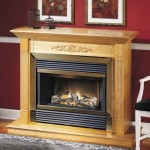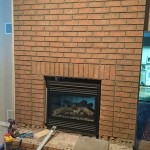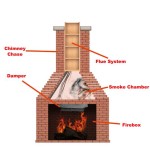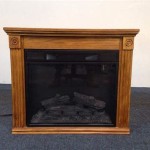1920s Fireplace Tiles: A Reflection of Art Deco and Architectural Style
The 1920s, a decade often romanticized as the "Roaring Twenties," witnessed a surge in artistic expression and architectural innovation. Fireplaces, once purely functional necessities, transformed into focal points of interior design, adorned with tiles that reflected the era's evolving aesthetic sensibilities. The selection and use of fireplace tiles during this period were heavily influenced by the Art Deco movement, emerging technologies, and a desire for both luxury and practicality.
This article explores the characteristics, materials, and design trends of fireplace tiles prevalent in the 1920s, examining how they contributed to the overall ambiance and architectural style of homes. It will focus on the key elements that defined the aesthetic, the common materials used, and the distinct styles that were popularized during this era.
Art Deco Influence on Fireplace Tile Design
The Art Deco movement, characterized by its geometric patterns, bold colors, and luxurious materials, profoundly impacted the design of fireplace tiles during the 1920s. This style sought to embrace modernity and technological progress, moving away from the more ornate and traditionally Victorian designs of previous decades. Fireplace tiles, therefore, became canvases for showcasing the distinctive features of Art Deco.
Geometric shapes, such as chevrons, stepped patterns, and stylized floral motifs, were frequently incorporated into tile designs. Symmetry and repetition were key elements, creating visually striking and balanced compositions. These motifs often reflected the influence of ancient Egyptian art and architecture, which experienced a revival during this period, adding an exotic and sophisticated touch to interiors. The use of clean lines and streamlined forms aligned with the overall Art Deco emphasis on sleekness and modernity. The combination of these elements created a visually appealing and distinct style that quickly gained popularity.
In addition to geometric patterns, stylized floral and botanical designs were also common. These designs were often abstracted and simplified, moving away from realistic depictions towards more symbolic representations. Floral motifs were rendered in a geometric style, further emphasizing the Art Deco aesthetic. These abstracted elements often served to add a touch of naturalism to the otherwise angular designs of the period.
Color palettes of the 1920s fireplace tiles often included bold and contrasting colors, such as black and gold, emerald green and cream, or vibrant blues and oranges. These color combinations created a sense of drama and sophistication, reflecting the glamorous and optimistic spirit of the Roaring Twenties. Metallic accents, such as gold or silver, were frequently used to enhance the luxurious feel of the tiles. The use of contrasting colours and accents enhanced the impact of the designs.
Materials and Manufacturing Techniques
The materials used in 1920s fireplace tiles varied depending on factors such as cost, availability, and desired aesthetic. Ceramic tiles were the most common choice, offering a balance of durability, affordability, and design versatility. Manufacturing techniques advanced during this period, allowing for greater precision and complexity in tile production.
Ceramic tiles were typically made from clay that was molded, glazed, and fired at high temperatures. The glazing process allowed for a wide range of colors and finishes, from glossy and reflective surfaces to matte and textured effects. The quality of the clay and the firing process determined the durability and longevity of the tiles. The rise of mass production methods helped make these tiles readily available to a wider segment of society.
Encaustic tiles, characterized by their intricate patterns and rich colors, were also popular during the 1920s, albeit to a lesser extent than ceramic tiles. Encaustic tiles are made by embedding different colored clays into the body of the tile, creating a design that is integral to the tile itself. This technique resulted in tiles that were exceptionally durable and resistant to wear, making them suitable for high-traffic areas around the fireplace.
While less common, some fireplaces featured tiles made from more luxurious materials, such as marble or glass. Marble tiles added a touch of elegance and sophistication, while glass tiles created a shimmering and reflective surface that enhanced the ambiance of the room. These materials were usually reserved for high-end homes and more elaborate fireplace designs. The use of such materials showcased the emphasis on luxury in this era.
Distinct Styles and Applications
Beyond the overarching Art Deco influence, fireplace tiles of the 1920s were employed in a variety of distinct styles and applications, reflecting regional variations and personal preferences. These styles ranged from streamlined geometric designs to more decorative and figurative representations.
One popular style was the "subway tile" design, which featured rectangular tiles arranged in a brick-like pattern. While subway tiles had been used in previous decades, they experienced a resurgence in popularity during the 1920s, often incorporated into fireplace surrounds with a more modern and streamlined aesthetic. The simple, clean lines of subway tiles complemented the Art Deco emphasis on geometric forms. The tiles were usually white, cream or pastel colours.
Another common style involved the use of decorative border tiles, which framed the fireplace opening and added a touch of embellishment. These border tiles often featured geometric patterns, floral motifs, or other decorative elements, providing a visual contrast to the surrounding wall or mantel. The use of borders allowed for customization and provided a frame for the fireplace scene.
Figurative tiles, depicting scenes from nature, mythology, or everyday life, were also used in some fireplaces. These tiles were often hand-painted or decorated with intricate designs, adding a unique and artistic touch to the fireplace surround. Figurative tiles often reflected the personal taste and interests of the homeowner. These tiles were rarer, and often more expensive than geometric designs.
The installation of fireplace tiles in the 1920s was typically done by skilled craftsmen who carefully laid the tiles in a precise and symmetrical pattern. The tiles were set in mortar and grouted to create a smooth and durable surface. The overall design and layout of the tiles were often carefully planned to complement the architecture of the room and the style of the fireplace mantel. Attention to detail was prevalent, reflecting the overall quality of craftsmanship of the era.
The fireplace tiles of the 1920s offer a glimpse into the artistic and architectural trends of a transformative decade. Reflecting the influence of Art Deco, the advancement of manufacturing techniques, and the diverse range of available styles, these tiles not only served a functional purpose but also contributed significantly to the aesthetic appeal of homes during the Roaring Twenties. The tile designs serve as a reminder of a time of great aesthetic and technological change.

Peacock Victorian Fireplace Clay Squared To Infinity

Fireplace Architectural Tile Handmade Vintage Historic

1920 S Fireplace Insert Google Search Edwardian Hearth Tiles

Fireplace Architectural Tile Handmade Vintage Historic

Fireplace Tiles In Historic Houses Old House Living

Victorian Fireplace Tile 1 2 Inch X 6 Hand Made

Fireplace Architectural Tile Handmade Vintage Historic

1920 S Fireplaces

Manhattan Geometric Tiled Fireplace Insert Twentieth Century Fireplaces

Hampstead Tiled Fireplace Insert Edwardian Fireplaces
Related Posts








